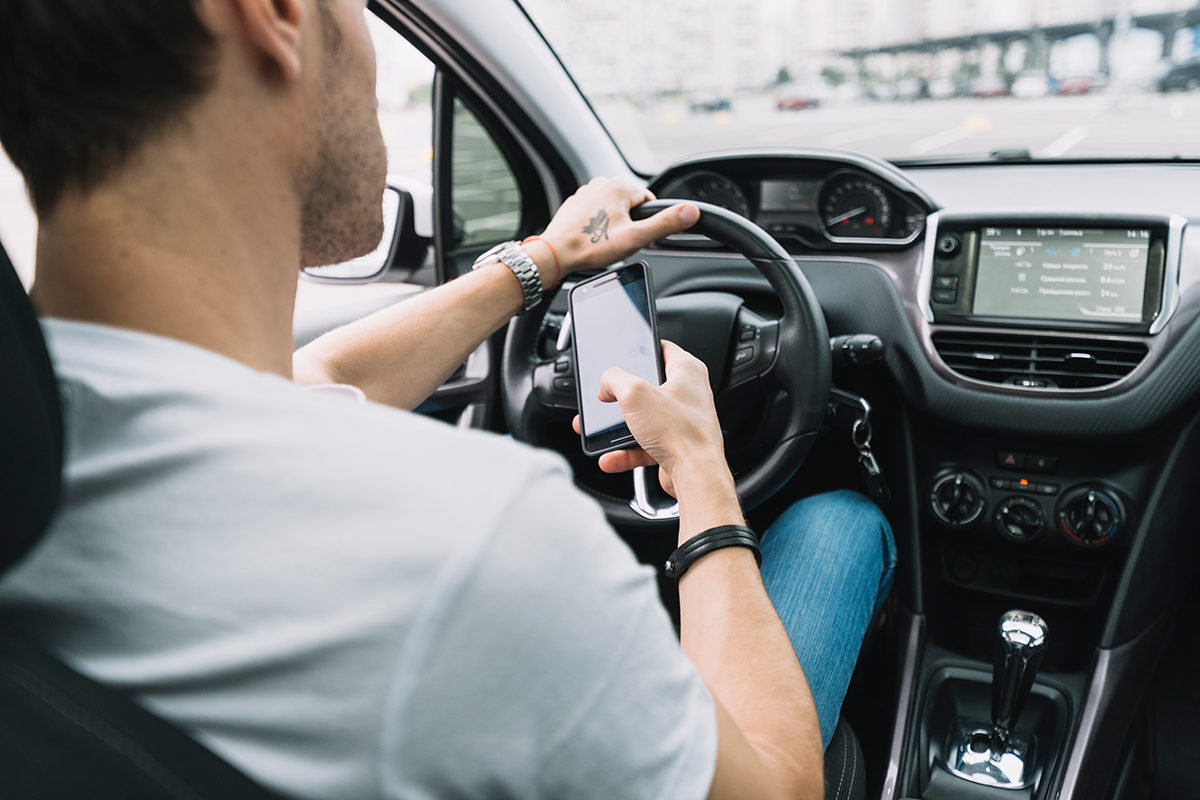
Distracted Driving – Don’t Be Part Of The Problem!
In 2013, motor vehicle collisions involving distracted drivers killed 3,154 and injured 424,000 people.[1] These numbers demonstrate an alarming trend in distracted driving. While distracted driving is often associated with younger or more inexperienced drivers, drivers of all ages cause motor vehicle collisions due to distracted driving. Texting and driving or talking on the phone and driving are the most well-known distractions for drivers, yet a wide variety of other distractions are also that take drivers’ attention off the road.
- Know the three main forms of distraction for drivers. In general, there are three main forms of distraction for drivers.
- Visual Distraction –the driver takes his or her eyes off the road
- Manual Distraction – the driver takes his or her hands off the steering wheel
- Cognitive Distraction – the driver takes his or her mind off of driving[2] It is important to note that many distractions fall into several (or all of the above) categories. For example, when sending a text message the driver is often looking at his or her phone (visual distraction), typing the text message (manual distraction), and focusing on content of the message (cognitive distraction).
- Do not text and drive. Sending and receiving text messages while driving is a huge source of distraction for drivers. A study from the Virginia Tech Transportation Institute reported that text messaging while driving increases the risk of a motor vehicle collision by 23 times, compared to a driver who is not distracted.[3] Not only is texting and driving dangerous; it is against the law in many states, including Ohio. R.C. 4511.204 makes texting while driving a “primary offense”, which allows law enforcement to pull over any driver observed, and issue a citation; the first offense can result in a fine of $150 and a license suspension up to 60 days. Violation of R.C. 4511.204 can also form the basis for liability (and an award of punitive damages) in a civil lawsuit.
- Avoid talking on the phone and driving. It is best to avoid talking on the phone and driving, even when using a hands-free device. In fact, studies show that hands-free devices do not make driving and speaking on the phone saferbecause it is still a form of cognitive distraction.[14] If it becomes necessary to take a phone call while driving, it is best to find a safe location to pull over and take the call.
- Use extreme caution when using in-vehicle navigation. In-vehicle navigation can be a great tool when traveling in an unfamiliar area; however, navigation systems can be a distraction. Navigation systems can take the driver’s eyes, mind, and hands off the wheel. The distraction of a navigation system is particularly problematic because a driver is more likely to use a navigation system while traveling in an unfamiliar location where taking one’s attention from the road can be even more likely to lead to an accident. When using a navigation system, pull over to a safe location and program the system to desired destination. If possible, preview the route before taking to the road to avoid taking your eyes or attention off the road.
- Eating. Grabbing a bite to eat or drink while driving may be convenient, but it can be dangerous. Eating and driving is a form of visual, manual, and cognitive distraction. Another danger of eating and driving is spilling food or drink while driving.
- Do not drive in a heightened emotional state. Taking the wheel while in an emotional state can be very dangerous as heightened emotions can interfere with our ability to concentrate on the road (a cognitive distraction) and lead to making reckless or careless choices on the road.
Driving in a safe manner is the responsibility of all drivers. Avoiding common distractions while driving is an important step toward making the roads safer for everyone. When sitting behind the wheel keep in mind that one careless choice is capable of having long-lasting repercussions on the lives of many.
[1] World Health Organization, Mobile phone use: a growing problem of driver distraction, available at http://www.who.int/violence_injury_prevention/publications/road_traffic/distracted_driving_summary.pdf.
[2] Distraction.gov (Official US Government Website for Distracted Driving), Facts and Statistics, http://www.distraction.gov/stats-research-laws/facts-and-statistics.html.
[3] Centers for Disease Control and Prevention, Injury Prevention & Control: Motor Vehicle Safety, http://www.cdc.gov/Motorvehiclesafety/Distracted_Driving/index.html.
[4] Federal Communications Commission (FCC), The Dangers of Texting While Driving, https://www.fcc.gov/guides/texting-while-driving.
